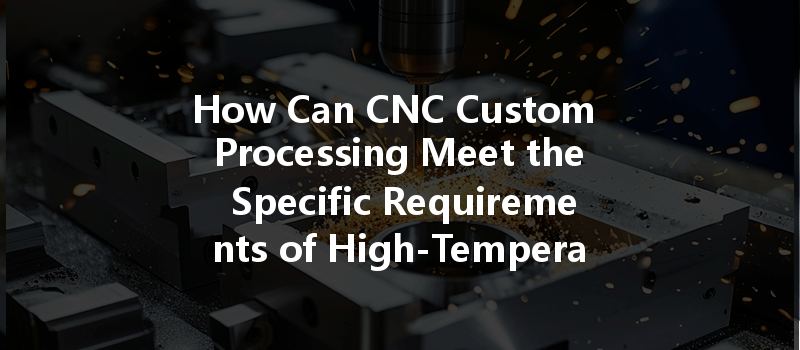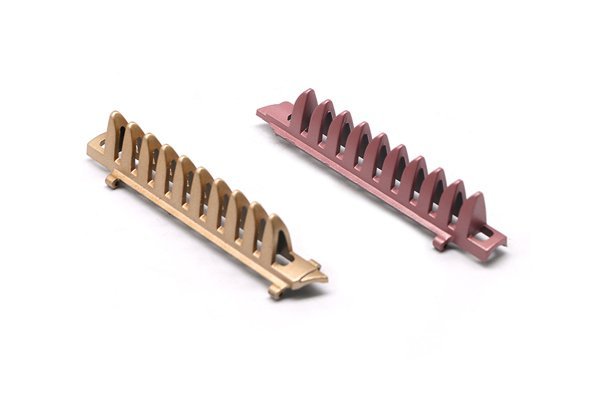Did you know that the global aerospace and defense industry consumed over 13 million tons of high-temperature alloys in 2021 alone? This staggering figure underscores the growing reliance on advanced materials in high-performance applications. As industries push the limits of technology, the demand for components that can endure extreme heat, pressure, and corrosion continues to rise. In this context, Computer Numerical Control (CNC) custom processing has emerged as a vital technique in working with high-temperature alloys. But how exactly can this technology meet the specific requirements of such challenging materials?
In this blog post, we will delve into the intricate world of CNC machining for high-temperature alloys, exploring their unique properties, the challenges presented in processing them, and the techniques that can be utilized to overcome these obstacles. By the end, you will have a comprehensive understanding of how CNC custom processing can cater to the unique needs of high-temperature alloys, ensuring precision, efficiency, and reliability in production.
Understanding High-Temperature Alloys
What Are High-Temperature Alloys?
High-temperature alloys, often referred to as superalloys, are designed to withstand extreme conditions, including elevated temperatures, corrosive environments, and high mechanical stress. These materials are primarily classified into three categories:
The Importance of High-Temperature Alloys
High-temperature alloys play an essential role in various sectors, including aerospace, automotive, power generation, and chemical processing. Their unique properties allow them to:
Challenges in CNC Processing of High-Temperature Alloys
Despite their advantages, working with high-temperature alloys presents several challenges in CNC processing:
Detailed Solutions in CNC Custom Processing
To address the challenges of CNC machining high-temperature alloys, several techniques and strategies can be employed:
Selecting the appropriate tooling is crucial for the successful CNC machining of high-temperature alloys:

Optimizing cutting speeds and feeds is essential to ensure efficiency and precision:
Utilizing advanced machining techniques can mitigate some challenges when CNC machining high-temperature alloys:
Creating stable and secure workholding setups is vital:
Post-processing is essential to enhance the overall quality of the finished component:
Case Studies and Real-World Applications
Case Study 1: Aerospace Turbine Components
In the aerospace industry, companies often rely on nickel-based superalloys for turbine blade manufacturing due to their excellent high-temperature performance. By using advanced CNC machining techniques, including custom tooling and advanced cooling systems, manufacturers have been able to produce high-precision parts that can withstand extreme operational conditions.
Case Study 2: Energy Sector Applications
Manufacturers in the energy sector have found innovative ways to CNC machine cobalt-based alloys for turbine components. By employing hybrid machining techniques that combine traditional CNC methods with laser cutting, they’ve been able to achieve intricate designs while maintaining structural integrity and performance under high temperatures.
CNC custom processing has proven to be a valuable ally in meeting the specific requirements of high-temperature alloys across multiple industries. By addressing the challenges of machinability, thermal expansion, workholding, and tooling through tailored strategies, manufacturers can effectively leverage the benefits of these advanced materials.
In summary, integrating the right tooling, optimizing cutting parameters, utilizing advanced machining techniques, implementing effective workholding solutions, and applying appropriate post-processing methods are all critical in ensuring successful CNC machining of high-temperature alloys.
As industries continue to evolve toward more innovative applications and demands, the significance of CNC custom processing in working with high-temperature alloys cannot be overstated. Embracing these techniques will not only enhance the performance and reliability of components but will also play a crucial role in driving technological advancements and improving operational efficiencies.
So, as you consider the future of manufacturing and engineering, remember the power of CNC custom processing in adapting to and harnessing the unique characteristics of high-temperature alloys. This knowledge isn’t just an option; it’s a necessity for those seeking success in high-performance environments.






